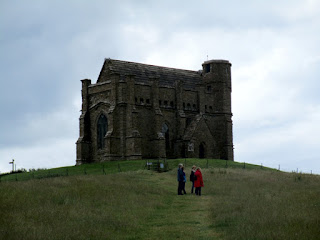My purchase
of cheese on our recent trip to Castle Cary was a sort of temptation. I told
myself I was supporting local suppliers, which I was, although the Calverley
Mill Scorpion here pictured is local to Cheshire, not Somerset, but since discovering
that soy milk and coconut-based cheese – vegetable fats – behave in pretty much
the same culinary ways as, and produce not dissimilar results from, their
animal equivalents, my dairy intake has been reduced to a splash of cow juice in
tea and on cereal, as the vegetable milks are much less pleasing for those
purposes. So I shouldn't really have done.
Generally,
people seem to assume that you put a cow in a field of lush grass and it will automatically
turn it into milk, which it won’t. The cow (or whatever) has to be pregnant or
nursing, and in modern farming cows and calves are usually separated very early
on, the calves being then fed artificially while their mothers’ natural milk is
retained for human use. Modern cows are bred to maximise their periods of pregnancy,
and very rarely get anywhere near a bull: insemination is usually artificial
too. You don’t have to express this process in emotive and inappropriate human terms
such as ‘theft’ and ‘rape’ to get the point that it isn’t a very natural life
for an animal to be living; you can do it in a more natural way, but it’s very cost-inefficient
and rarely happens.
The last
time I bought any meat it was part of a cow I am pretty sure I would have met. Our
Swanvale Halt butcher takes its Aberdeen Angus beef from a local herd which is
sometimes pastured on the meadowlands around Hornington, so you can see the
cows every time you walk along the main road during the season, or at a farm in
Shintleham where I happen sometimes to go for meetings of a local charity. The butcher
even tells you where the animals are slaughtered, a small, family-run
slaughterhouse a few miles away. This is about as animal-friendly and environmentally-acceptable
as modern meat production gets. When I bought it, I looked at my tiny, expensive
steak and hoped I wouldn’t ruin it in the oven.
Most of our
meat and dairy produce doesn’t come from farms like the one at Shintleham. It’s
produced by vast agribusinesses, some of them international ones, the
expression of an industrial farming system making cheap food out of specialised
forms of animals designed to do one thing out of the many a given animal might
do, at maximum efficiency. And, though I know that 1) an animal ending its life
by becoming food is hardly an unnatural or unjust fate, and 2) you can’t have
traditional, holistic, what is in modern parlance called regenerative farming without
the poo of animals to fertilise the land where you grow your crops; despite all that, even the
Shintleham cows are being bred so that I can eat them, when I really, really
don’t need to. I can, with care, get my protein and vitamins elsewhere; and so,
I have concluded, I should. My romantic attachment to the ideal of small-scale
holistic farming, the sort my grandad would have been familiar with in the
second quarter of the last century, is basically fed by delusion. That’s not
what farming usually is in the first quarter of this one. I don’t like animals
and wouldn’t share my home with one, apart from the insects I can do little
about, but I can’t justify eating beings that have been created for me to eat
by a colossal global industry, whose five biggest companies pump more carbon dioxide into the atmosphere than Exxon, when it isn’t necessary.
The other
evening The Moral Maze on Radio 4 was discussing proposals to enshrine the sentience
of animals in law. Roman Catholic commentator Tim Stanley came out with the
following extraordinary statement:
There is a
practical consequence of an all-out war on abuses against animals, and that is
the decimation of industries around which human beings have built their lives,
leisure, food etc. … Imagine if we woke up tomorrow and really confronted what
eating meat means. We would be appalled with ourselves, we would regard
ourselves as genocidal maniacs. It has a huge impact on our moral view of
ourselves, not just our treatment of animals but our entire moral identity.
That’s why it’s right to be cautious, because there are huge consequences for
doing something that seems so obviously benign.
Mr Stanley finds his way to reconcile knowing what happens to animals in the meat industry with his belief that they should be treated justly, through the Christian idea of dominion, a God-ordered structure of relationships which includes humans within a natural order of killing and eating. My question is whether what actually happens in the 2020s genuinely reflects that. Instead I have found myself (as Christian does in the Pilgrims Progress) living in the City of Destruction. ‘Arise, Peter, kill and eat’, it says in the Book of Acts; but now, it isn’t the animals that are unclean, it’s our human usage of them.
(I didn't spoil the wee steak, but I didn't enjoy it that much either).












































